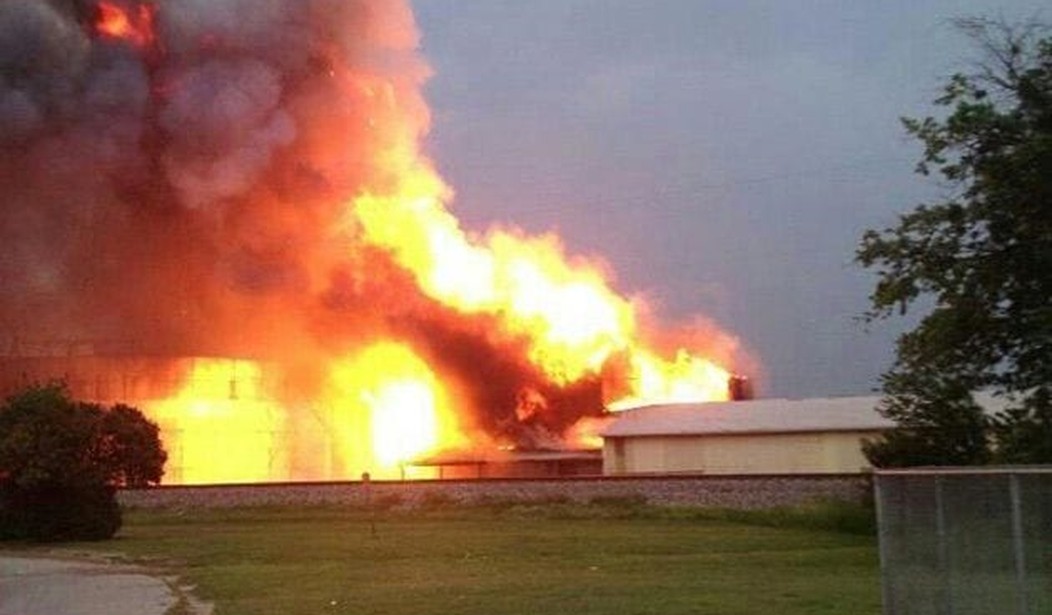WASHINGTON – Congressional leaders and the White House set their sights on the oversight system that some blame for the deadly explosion at a fertilizer plant in West, Texas.
President Obama ordered Thursday the drafting of tighter rules for the handling and storage of ammonium nitrate – the chemical responsible for the explosion at West Fertilizer Co. that claimed the lives of at least 14 people and injured more than 300 others in April.
The executive order, which is designed to reduce the risks of working with hazardous materials, requires agencies to take several steps to improve safety at plants that store dangerous chemicals. On Friday, the president finally declared West a disaster area.
The directive creates a new Chemical Facility Safety and Security Working Group composed of the Environmental Protection Agency (EPA), the Department of Homeland Security (DHS), and other federal agencies.
The president instructed federal agencies to develop a plan within 90 days to identify measures to improve plant safety.
The announcement came as the administration faces increasing pressure from members of Congress and safety advocates to improve federal oversight of chemical facilities, refineries, and fertilizer plants.
At an unrelated House Homeland Security subcommittee hearing on the same day of the president’s announcement, lawmakers pressed David Wulf, DHS’s national protection and programs director, for answers on why that agency has not fully implemented ammonium tracking.
Wulf said the executive order would “complement many individual efforts” among agencies to step up facility security and would “modernize” the work. But the lack of collective oversight by – and sharing of information between – local, state and federal agencies was also a repeated source of questioning Thursday.
“My sense is the coordinating has been occurring in the field,” Wulf said.
He said nationally, though, there is no consolidated database of chemical facilities.
“That is something we’re going to look at doing,” he said.
Congressmen said at the hearing the fertilizer plant explosion sent a shockwave of fear across the nation.
“Americans have been forced to ask themselves very tough questions: ‘Can a West-type explosion happen here in my community?’” said Rep. Bennie Thompson (D-Miss.).
Facilities that store more than 400 pounds of ammonium nitrate, like West Fertilizer, are supposed to report such storage to the federal government. West Fertilizer, however, never told DHS about its ammonium nitrate, though local and state agencies were aware of it.
According to a filing with the EPA in late 2012, the plant was storing 270 tons of ammonium nitrate at the time of the explosion. The facility also stored 55 tons of anhydrous ammonia, another chemical commonly used as fertilizer.
Rep. Michael McCaul (R-Texas) said the West incident demonstrates the harm to individual communities from a chemical disaster. He added that the cost of the physical damage alone is estimated to be nearly $100 million.
“Chemical facilities that are not run with the utmost care are a liability to everyone. Over the years, West Fertilizer had been broken into and vandalized repeatedly. The local residents complained about the strong smell of ammonia, a smell so potent it burned their eyes. The facility was routinely left open after hours, and police reports indicate 11 burglaries occurred over the last 10 years,” McCaul said. “West Fertilizer was literally a disaster waiting to happen.”
Rep. Patrick Meehan (R-Pa.), chairman of the subcommittee, said the tragic incident revealed the “disturbing fact” that there are thousands of facilities across the nation that store and handle large quantities of high-risk chemicals that have gone under the radar at DHS.
Several federal agencies share the responsibility of overseeing chemical plant security. EPA requires facilities holding hazardous substances to develop a risk management plan, implement safety, and analyze off-site consequences. The Occupational Safety and Health Administration (OSHA) has separate regulations on hazardous materials and conducts inspections of facilities. In addition, DHS, through the Chemical Facility and Anti-Terrorism Standards (CFATS), also regulates high-risk chemical facilities.
Created in 2007, CFATS prescribes a regulatory framework for facilities that produce, handle, or store high-risk chemicals in the U.S. The program was intended to offer a flexible, risk-based security program to prevent abuse and theft of high-risk chemicals by terrorists.
As Meehan noted, not only was West Fertilizer not registered with the DHS’s CFATS program, the department did not even know of the plant’s existence.
CFATS is based on self-reporting. For facilities that do not report to the DHS, basically nothing happens, noted Stephen Caldwell, the Government Accountability Office’s (GAO) Homeland Security and Justice director. Caldwell also pointed out that not until well along in the process – which could be months or years – does DHS actually inspect the facility to verify the information that has been reported to it.
Five years after Congress mandated that sales of ammonium nitrate be tracked, federal rules to do that have not been forthcoming, and DHS is still developing its final rule.
On top of that, GAO estimated that it could take another 7 to 9 years before DHS is able to approve the 3,120 site security plans in its queue.
Rep. Bill Flores (R-Texas), whose district includes West, said it appears the disaster happened because of West Fertilizer’s failure to comply with existing regulations and the lack of oversight enforcement. Flores said it is up to federal agencies and private industry to act promptly to adopt safety measures that can prevent similar disasters.
“Before Congress or regulatory agencies consider new statutes or rulemaking, they should make sure that the ones we have are being properly implemented and adjudicated,” Flores said.
Timothy J. Scott, chief security officer at Dow Chemical, told members of Congress that safety is a top priority for the chemical industry. Nevertheless, he stressed the need to ensure the effectiveness of rules already on the books.
“More regulations are not the answer, but rather communication, understanding compliance and enforcement of the established regulations already in place,” Scott said.
Scott said the chemical industry supports a multi-year reauthorization of CFATS and DHS to continue making progress and bring compliance and enforcement to the chemical security process.









Join the conversation as a VIP Member